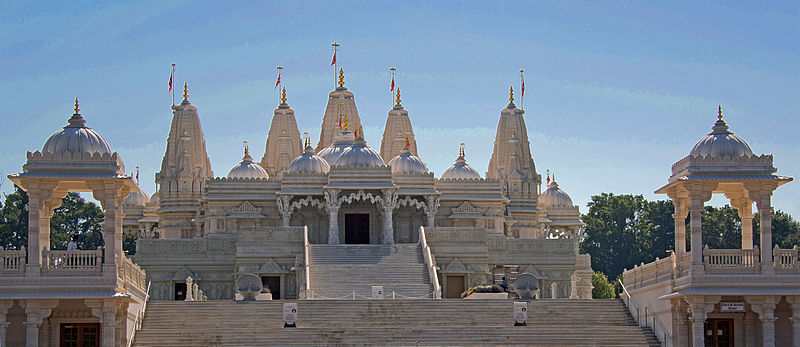Views expressed in opinion columns are the author’s own.
“So you pray to cows, right?”
If I had a dollar for every time someone asked me that question, I’d probably have a considerable amount of spending money in my wallet right now. However, despite my frustration with people who respond ignorantly when I tell them I am Hindu, I can hardly blame them for their lack of awareness.
Although it is the third-largest world religion, Hinduism remains an enigma to many in countries outside India, where it originated. This is why — as a Hindu woman, born and raised — I thought I’d clear up some misconceptions about my faith.
First off, let me clarify that Hinduism does not have one specific doctrine; rather, it is more of a lifestyle that can be interpreted by people in their own personal manner. This is why it is acceptable in the Hindu faith to worship God by various means, as there is no single correct way to show devotion.
One of the major differences between Hinduism and some other religions is that its followers have never conquered foreign lands to proselytize others. This is because Hindus believe it is fundamentally wrong to assert that “one’s own path towards God is the only true and meaningful path.” Thus, Hinduism encourages coexistence between multiple faiths, including Judaism, Christianity and Islam, even if their beliefs do not directly coincide with those of Hindus.
Hindus worship God in the form of several deities — yet Hinduism is not a polytheistic religion. Although there is some “debate on the proper terminology,” representing God through various manifestations is a way for us to try to wrap our minds around one God whom humans can never fully comprehend. While there may be different names for each manifestation, they are all considered to be one and the same.
Think of it this way: You might have a first name and a nickname, but regardless of which name people use, you are still the same person. Similarly, although there are three main deities (Brahma, Vishnu and Shiva), they are all different representations of the same God. On a related note, Hindus depict these deities by constructing idols — but no, we are not worshiping the statues. They merely serve as a tangible representation of God so that people can focus on prayer with the help of a visual aid. Hindus know that the idol is just made of clay and stone; the value lies in the symbolism behind the effigy.
Another misunderstanding some have about Hinduism is the idea that women are expected to be submissive. Now, it would be false to say that women in India are afforded the same rights as their male counterparts. Issues such as female infanticide, rape and dowry still plague some communities in India. However, these travesties are a result of unjust cultural norms, and not spurred by religious beliefs.
In fact, several Hindu deities are females, and each goddess represents a different facet of life. For example, the goddess Saraswati symbolizes wisdom, while the goddess Lakshmi bestows prosperity; Hindus commonly worship both.
To make my way back to one of the most common Hinduism misconceptions: Hindus worship cows. Although cows are revered in the religion, they are by no means worshiped. Cows are respected in the Hindu faith because they are seen as gentle animals that provide milk, an important source of nutrition. Thus, they are admired for their contributions, which is why many Hindus refrain from eating beef.
Now, the next time you run into a Hindu, you will know a little more about their beliefs. After all, Hinduism is more than just cows and karma.
Asha Kodan is a freshman biology major. She can be reached at ashakodan@ymail.com.



